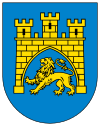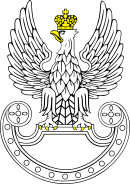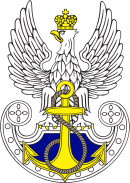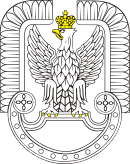Battle of Lwów (1920)
| Battle of Lwów | |||||||
|---|---|---|---|---|---|---|---|
| Part of Polish-Bolshevik War | |||||||
| |||||||
| Belligerents | |||||||
|
|
| ||||||
| Commanders and leaders | |||||||
|
| |||||||
| Strength | |||||||
| + 22.000 | ?? | ||||||
| ||||||
During the Polish-Soviet War of 1920 the city of Lwów (modern Lviv, Ukraine) was attacked by the forces of Alexander Ilyich Yegorov. Since mid-June 1920 the 1st Cavalry Army of Semyon Budyonny was trying to reach the city from the north and east. At the same time Lwów was preparing the defense. The inhabitants raised and fully equipped three regiments of infantry and two regiments of cavalry as well as constructed defensive lines. The city was defended by an equivalent of three Polish divisions aided by one Ukrainian infantry division. Finally after almost a month of heavy fighting on August 16 the Red Army crossed the Southern Bug River and, reinforced by additional 8 divisions of the so-called Red Cossacks, started an assault on the city. The fighting occurred with heavy casualties on both sides, but after three days the assault was halted and the Red Army retreated. With the crushing defeat of main forces of the Red Army in the battle of Warsaw, and the Polish victories at Komarów at Zadwórze, Russian forces were forced to retreat from Lwów.
For the heroic defense with large units of locally raised volunteers the city was awarded with the Virtuti Militari medal on 11 November 1920.
Lwów theatre of operations
Commanders and forces
Polish commanders included Czesław Mączyński, Domaszewicz (240), Zagórski (240), Tatar-Trześniowski (240), Abraham (cavalry), Krynicki, Śniadowski (artillery), Wit Sulimirski. Rómmel (1st Cavalry Division). Units: 240 Volunteers. Size: volunteers ~12,000. 1st Cavalry Division.
Soviet commanders included Semyon Budyonny, Jakira (cavalry), Kotowski (cavalry). Budyonny's insistence (bordering on insubordination) on capturing Lwów has led to weakening Soviet forces near Warsaw and was a factor in their eventual defeat.
The battle
Around the time of Battle of Radzymin in mid-August, the Polish line of defense in the upper Bug River region had been breached by the Red Army. Polish units in that region had begun a series of delaying maneuvers (like the battle of Zadwórze) and retreated towards Lwów. Polish 1st Cavalry Division engaged Soviet units under Budionny near Artasowo and Żółtańce.
On 12 Aug., Budyonny received orders for the Konarmiya "to destroy the enemy on the right bank of the Bug in the shortest possible time and, having forced the river, to follow on the heels of retreating Third and Sixth Polish Armies and seize the city of Lwow." Budyonny started a three prong attack on 13 Aug., and was at Lopatyn on 14 Aug. On 15 Aug., his 6th Cavalry Division swam the river and came within nine miles of Lwow, despite being counter-attacked by the Poles, which included twenty planes. However, on 16 Aug., he received orders from Tukhachevsky ordering Budyonny to march to Ustilug-Wlodzimierz. Budyonny continued to advance so that Lwow was surrounded on three sides. Yet on the evening of 19 Aug., Budyonny received news of the Polish counter-offensive, and abandoned the siege of Lwow on 20 Aug.[1]:216-217
Related battles
Several battles near Lwów were decisive for the outcome of the entire war. They included:
- Battle of Zadwórze on 17 August ended in the near total destruction of Polish forces, but at the same time halted the Soviet advance preventing the forces of Siemion Budionnyi from either advancing towards unprepared Lwów or breaking off and helping the Soviet forces fighting in the Battle of Warsaw.
- Battle of Komarów on 31 August 1920, the biggest cavalry battle in the history of warfare since 1813 and the last great battle in which cavalry was used as such and not as mounted infantry. The Battle of Komarów was a complete disaster for the Russian 1st Cavalry Army which sustained heavy casualties and barely avoided being totally surrounded. After that battle, the 1st Cavalry Army morale has collapsed and the army which was one of the most feared of the Soviet troops was no longer considered an effective fighting force.
References
- ↑ Davies, N., 1972, White Eagle, Red Star, London: Macdonald & Co, ISBN 9780712606943
- Jerzy Pogonowski; Gen. Czesław Mączyński (1921). Bój o Lwów; z walk Armji Ochotniczej z 1920 roku (Struggle for Lwów; the fights of the Volunteer Army in 1920) (DOC). Gdańsk: Lotos. p. 73.
See also
- Battle of Lwów (1918)
- Battle of Lwów (1939)
- Lwów Eagles
- Polish-Ukrainian War
| ||||||||||||||||||||||||||||||||||||



